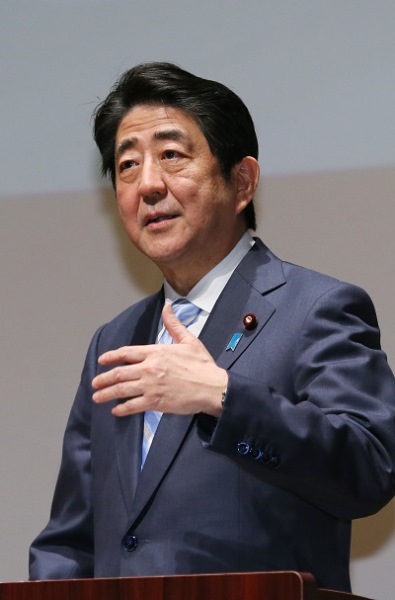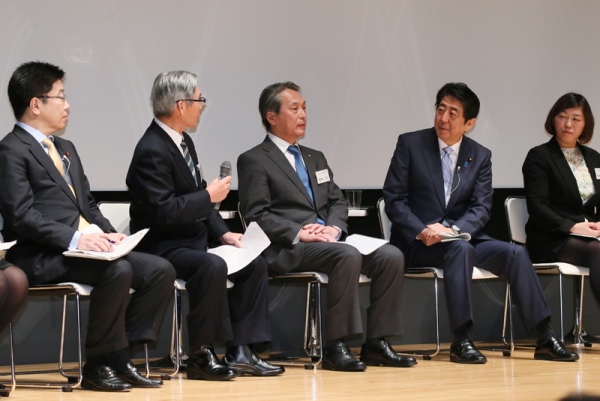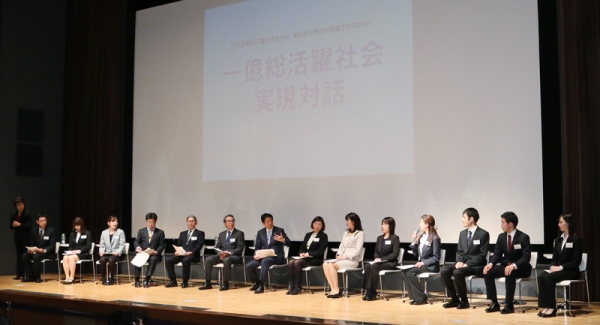Home > News > The Prime Minister in Action > February 2016 > Dialogue on the Realization of the Dynamic Engagement of All Citizens
The Prime Minister in Action
Dialogue on the Realization of the Dynamic Engagement of All Citizens
February 28, 2016
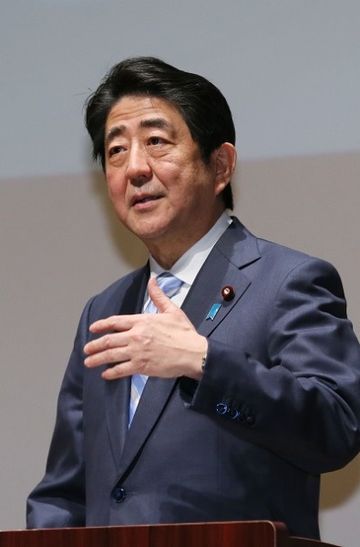
Photograph of the Prime Minister delivering an address
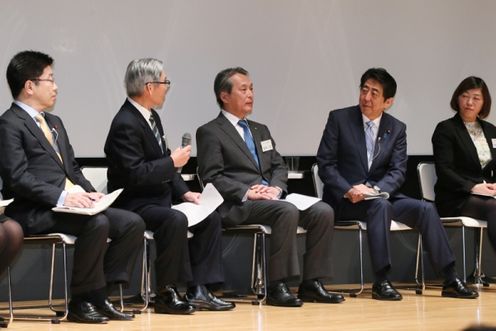
Photograph of the Prime Minister exchanging views with the speakers (1)
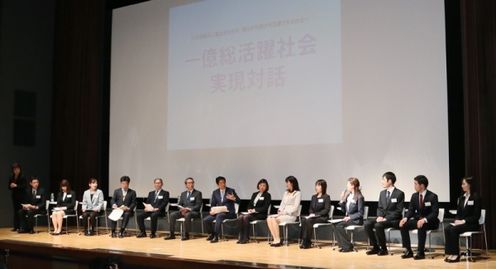
Photograph of the Prime Minister exchanging views with the speakers (2)
[Provisional Translation]
Prime Minister Shinzo Abe attended the Dialogue on the Realization of the Dynamic Engagement of All Citizens held at Government Office Building Number 7.
The Prime Minister said in his address,
“Thank you very much for your participation today in the Dialogue on the Realization of the Dynamic Engagement of All Citizens.
Today’s meeting is being held in order to have an exchange of opinions with a wide range of people toward the establishment of the Plan to Realize the Dynamic Engagement of All Citizens that is scheduled to be compiled this spring.
The minister in charge of this issue, Minister Kato, and I, hope to hear your opinions directly and then reflect them in the Plan.
The Abe Administration will tackle the long-standing issues of the decline in the birthrate and the aging of the population head on. This is the starting year for the dynamic engagement of all citizens.
We will establish the grand goals of “achieving the largest GDP in postwar history of 600 trillion yen,” “realizing the desired birthrate of 1.8 children per woman,” and “reducing the number of people who leave employment to provide nursing care to zero,” and then launch three new arrows toward these three targets.
We will use the increased tax revenues that have resulted from Abenomics to strengthen the foundations of childcare and social security, which will further strengthen the economy. The society in which all citizens are dynamically engaged is a proposal to create this kind of a positive cycle of growth and distribution.
In order to take on the issues of the decline in the birthrate and the aging of the population, we included funding to allow the acceptance of an extra 500,000 individuals into daycares and also to expand the number of people who can receive nursing care by over 500,000 people in the supplementary budget established last month.
In addition to the preparations being made for these expansions, within the Plan to Realize the Dynamic Engagement of All Citizens, I would also like to include measures to improve the working conditions of caregivers and children’s nurses.
Furthermore, as one of the achievements of Abenomics corporate profits are at their highest levels in history, and we are now aiming to increase wages above what they were last year in order to pass these profits on to workers. I also want to create a positive cycle of growth and distribution around the minimum wage by aiming to set it at 1,000 yen per hour and then increasing it at a rate of 3% per year.
Whenever I have visited countries overseas up to this point, I have been asked whether or not there is a future for Japan given the decline in our population. I understand such anxiety very well.
However, I believe that Japan is home to many women who have received a high level of education and hold hidden potential, as well as countless energetic and ambitious elderly people who possess a wealth of experience and knowledge.
A society in which all citizens are dynamically engaged is a society anyone can be actively engaged in, be they male or female, elderly or young, people who have experienced failure, or those with disabilities or fighting an illness.
Toward the realization of a society in which all citizens are dynamically engaged, we are working to reform our society such that many working styles will be possible in line with each person’s situation. The greatest challenge for the Abe Cabinet over the next three years will be to reform the way that people work.
The first pillar of the reform of the way that people work will be efforts to improve the treatment of the 40 percent of Japanese workers who work in irregular employment.
In Europe, the average wages of part-time workers are 20 percent lower than the wages of regular workers. In Japan, part-time workers receive 40 percent less.
For this reason, we are going to make a serious effort to introduce equal pay for equal work.
The second pillar will be the correction of long working hours.
The proportion of workers undertaking overtime for particularly long periods of time, those working 49 hours or more per week, is approximately 10 percent in Europe. In Japan, this group encompasses 20 percent of the workforce.
I want to set out clear countermeasures for this issue within the Plan to Realize the Dynamic Engagement of All Citizens.
The third pillar will be the promotion of employment among the elderly.
According to surveys, nearly 70 percent of those over the age of 65 would like to work, but in reality only 20 percent of them are actually doing so.
To fulfill the wishes of these senior citizens, in order to help them live long and healthy lives, and in order to secure the capability for Japan to grow in the midst of a decline in our population, I want the Plan to Realize the Dynamic Engagement of All Citizens to incorporate measures to promote employment among the elderly.
Moreover, I want to create a concrete roadmap toward the establishment of measures in the Plan to Realize the Dynamic Engagement of All Citizens to promote the employment of young people, people with disabilities, or fighting an illness.
I absolutely want to hear about everyone’s experiences today. I am resolved to take the lead on the creation of society in which all citizens are dynamically engaged in such a way that I can respond to each one of your ideas. Thank you very much.”

